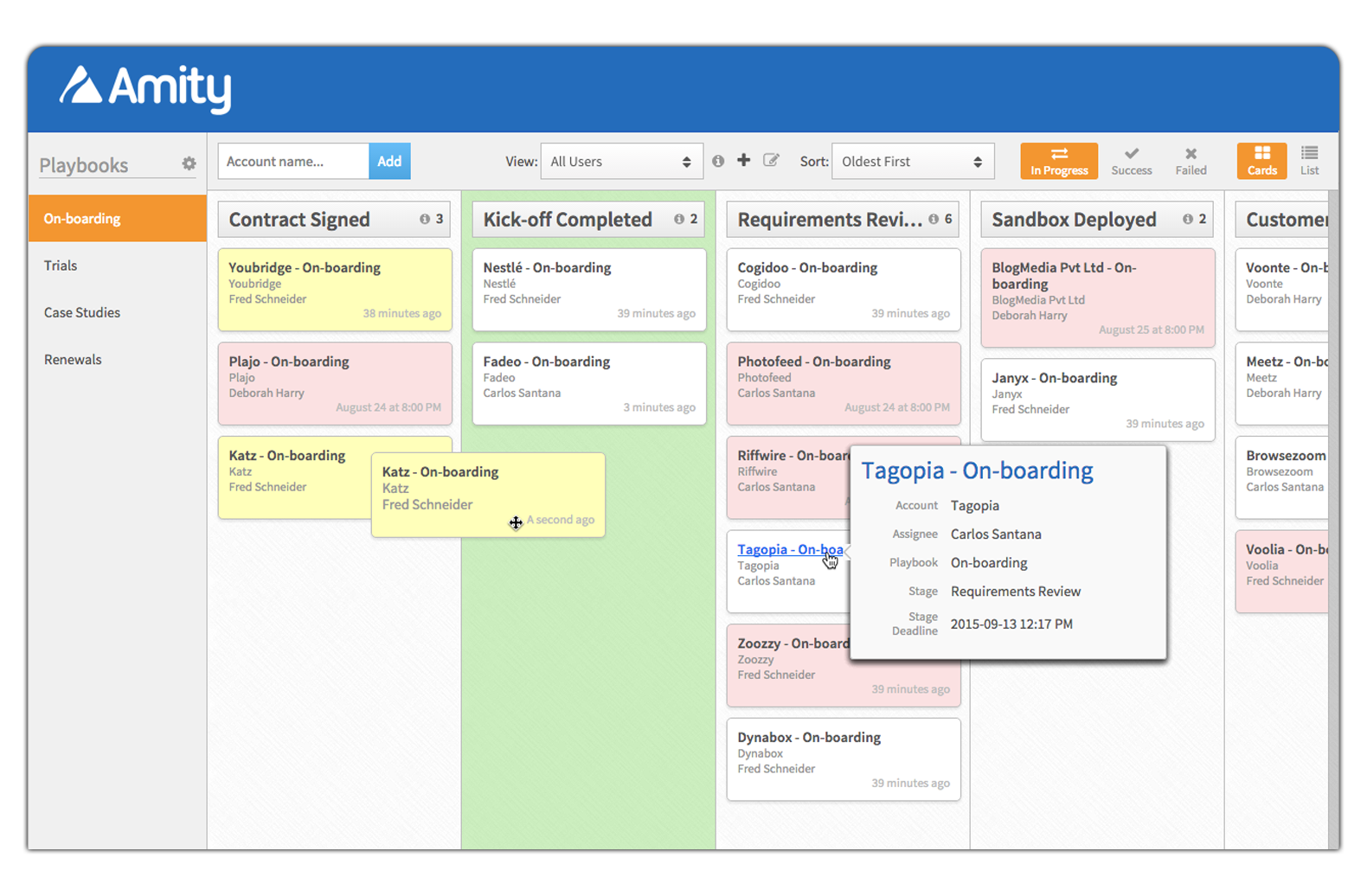5 Habits That Will Make You More Productive Right Now

“If only there were more hours in the day.”
How often have you said something like that? How many times have you felt like you weren’t getting enough done in the day?
Customer success is a busy discipline. It can be downright hectic, some days. No matter how hard to try to prevent emergencies, there’s always going to be an odd fire that needs putting out.
A customer ready to cancel, poor renewal numbers, documentation errors… These problems can fall onto your desk and obliterate your entire schedule. To keep up with a demanding job in a growing company, you need to stay productive.
Improving your productivity doesn’t necessarily mean buckling down and working harder (although that helps in its own way). It means using smart strategies like these to get more done.
1. Prioritizing tasks
Instead of aimlessly completing one random task after another, determine your most important tasks to put at the top of your to-do list.
Stephen Covey, author of The Seven Habits of Highly Effective People and First Things First created the Time Management Matrix, a visual representation of task prioritization.

Image: sidsavara.com
Add your tasks in each appropriate quadrant.
- Quadrant 1: Important + urgent = Tasks that need to be handled right now.
- Quadrant 2: Important + not urgent = Tasks that don’t need immediate attention, but should be scheduled for completing.
- Quadrant 3: Not important + urgent = Tasks that should be minimized or delegated to someone else.
- Quadrant 4: Not important + not urgent = Tasks to be eliminated if possible because they add little value.
Using the matrix isn’t as simple as working on quadrant 1, then quadrant 2, etc. The trick is to use the matrix to understand where your tasks fall in terms of priorities.
For example, a task in quadrant four that you want to eliminate might require informing the task-giver that you can’t help. Even though the task is unimportant, updating your colleague is very important (he might be depending on you and now needs another solution), so it becomes a quadrant 1 task.
The time management matrix is an exercise. After creating a few, you will get the hang of the process. Eventually you’ll be able to look at a to-do list or inbox and identify a proper order of tasks.
2. Time batching
For a while, multi-tasking was in vogue. Everyone wanted to hire people who could multi-task.
Unfortunately, multi-tasking doesn’t really exist. Your brain can only focus on one thing at a time. When you’re “multi-tasking,” you’re really just task-switching, which reduces productivity by as much as 40%
Time batching is a productivity technique that leverages the full use of your concentration. By grouping similar tasks together, you can put your mind in the right mode for the work.
Grouping your work into batches has three big benefits.
1. It improves your focus – You brain has an easier time focusing on a task the longer it works on it. Distractions become easier to ignore. Eventually, you enter a fluid state where your brain wants to continue with the same task instead of wander off to something else.
2. It reduces mental clutter – Have you ever had trouble focusing on a task because you were worrying about so many other things? It happens to all of us. By focusing on one thing until it’s done, your inbox, to-do list, and your head clear up.
3. It reduces your start-up and slow-down time. Our brains require time to shift from one type of task to another. Speaking with customers, creating processes, writing onboarding emails all require different skillsets. Over time, these little transitions between modes add up and rob us of time in our day.
Batching your time is as simple as deliberately scheduling your day. Look at your to-do list and group like projects together with modest breaks in between.
Group tasks according to the skills they require, not for the format of the work. For instance, directing your team may seem like writing because you’re doing it by email, but managing is not the same as writing product documentation.
3. Working to your strengths
I’ve written before about using your team according to their strengths. Delegating tasks to whomever is available at the moment is a recipe for poor output. The same principal applies to your own work.
Gallup discovered that “people who use their strengths every day are three times more likely to report having an excellent quality of life, six times more likely to be engaged at work, 8% more productive and 15% less likely to quit their jobs.” All of that leads to increased productivity.
Utilizing your strengths doesn’t mean ignoring tasks that require your non-strengths. First, read this article about discovering what your strengths are.
Second, try to delegate tasks to others if you don’t think you can do them well. Find a balance with the other customer success managers on your team. Can work be traded for better results?
Third, think in terms of goals. You’ll find that many problems can be solved in different ways. If your written communication skills aren’t top-notch but you’re a charmer on the phone, consider calling that client who’s about to cancel instead of emailing. Don’t be get locked into a particular style of working. Solve problems with the best tools you have.
4. Lean on software
If you work for a high-touch SaaS with a few enterprise customers, monitoring the health of your clients is straightforward. You might speak to them regularly or train them in person. When they have a problem, you’re aware.
If you work for a low-touch SaaS business with thousands of customers, you don’t have that luxury. You suffer from a lack of information.
Customer success software gives you a high level view of the health of your customer base. It allows you to import and collect customer data, discover which customers need attention, manage customers’ lifecycles (from onboarding through renewals/expansions), and gives you opportunities to proactively engage with them.

Image source: getamity.com
Imagine being able to directly target unhealthy accounts. Instead of pouring through analytics or making tedious check-in calls, you can let software improve the customer experience and identify potential problems or abnormal behavior.
Here are some solutions I recommend you look at if you are ready for a CS software platform:
5. Separate yourself from work
At the risk of sounding pedantic, I’ll leave you with this: Sometimes the best way to get more done is to stop working.
In a high growth startup, there’s often the expectation that you should always be working. 10-minute clear-your-head breaks create resentment. Vacation days make other people nervous. Those feelings are compounded if funding is running low and the runway is ending soon.
But working yourself to exhaustion doesn’t benefit anyone. I encourage you to take breaks from work.
The most productive people are also the most balanced people, with hobbies and friends outside of the work. Our brains aren’t meant for a single track. In fact, research from the University of Illinois found that brief diversions improve focus.
Remember: If you don’t actively manage your own time, someone or something else will. And that person or thing probably won’t have your best interests in mind.
